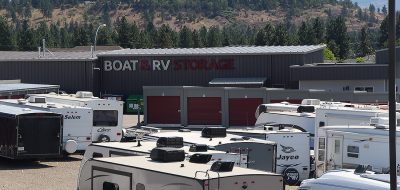 Through the years we have seen motor home manufacturers continue to up the bar with new and innovative ideas. These ideas and new features have attracted buyers, both new to the lifestyle and those trading up. But, unlike the auto industry, no one quoted expected fuel mileage, or in many cases, cared, for that matter. That may be soon to change. You can just imagine the potential buyers now. Even though they are not expecting an economic fuel consumption figure, there will be more people than ever asking “How many miles per gallon”.
Through the years we have seen motor home manufacturers continue to up the bar with new and innovative ideas. These ideas and new features have attracted buyers, both new to the lifestyle and those trading up. But, unlike the auto industry, no one quoted expected fuel mileage, or in many cases, cared, for that matter. That may be soon to change. You can just imagine the potential buyers now. Even though they are not expecting an economic fuel consumption figure, there will be more people than ever asking “How many miles per gallon”.
So you can bet the most wanted innovation that a motor home manufacturer would like to be able to provide in the future, is a more fuel efficient product. This would not only give them the competitive edge, but could also attract some potential buyers that might otherwise stay on the side lines.
Well, I don’t think we will be seeing any hybrid powered motor coaches in the near future. Fuel efficient automotive technology is focused on the development of hybrid cars and light trucks, a far larger world market than that of any larger type vehicle.
So what might we see motor home manufacturers do to improve on today’s fuel guzzlers?
Weight Reduction
The reduction of weight would be a step in the right direction. This could be accomplished by the use of lighter materials and structural design techniques. Using lighter material can have some costs challenges as it still has to be as strong. A composite or Corian counter top is made up of a solid structure. Similar material can be used, but by designing the inside to have a honey comb like structure, a substantial weight reduction can be achieved while still maintaining the strength. This, however, adds to the material manufacturing costs. Structural design changes to steel frames, brackets and supports can also have a positive affect on weight reduction. Instead of using a beam, bar or angle iron, a lighter stamped and formed steel piece can provide equal strength. This requires additional design and stamping costs. Use of aluminum in place of steel is again another way of cutting the weight. Nearly all these methods of weight reduction increase the costs, and costs are already an issue today for motor coach builders. Unfortunately, in most cases if you try to reduce the weight and the costs, it results in loss of integral strength and quality.
Smaller Engines
Reducing the engine size is probably a given. Similar to the automobile industry in the early ‘70’s, a decrease in horse power and engine size may be in order. The motor coach horsepower craze, where bigger is better, will inevitably fade away as smaller, more efficient engines fill the bill, like the Cummins ISB diesel shown in the photo. This will also help reduce the weight as these engines come in at several hundred pounds lighter than those that are fitted today. Cost wise this will be a savings for the manufacturer as will be the somewhat lighter frame needed to support the smaller power plant.
Efficient Ways To Get The Power To The Wheels
More efficient transmissions may help if costs budgets can be met. This could be in the form of additional gearing or overdrives. It may also be filled with electric drives with two motors, one for each drive wheel. (See earlier article covering this.) This would eliminate the need for a differential and banjo housing and may further reduce the overall vehicle weight. The prime mover in this case would drive a generator, therefore could be placed in a location best suited for vehicle balance and engine cooling.
Aerodynamics
Body and overall vehicle profile design changes that would reduce some of the drag coefficients that exist in many of today’s coaches. This would inevitably require a change in the design profiles of the front and rear caps. Additionally, the overall height would probably need to be reduced to also contribute to this end.
Overall Length
Shorter coach lengths may also be more in demand than in the past. This will reduce the vehicle weight and the B.T.U. demand for both heating and cooling within the coach. Additional cost saving may be realized for those that pay off season storage. This storage is generally charged as a per foot or square foot cost, where shorter is obviously cheaper.
Increased Non-Powered Engine Cooling
Better engine cooling package designs may contribute to reduced time needed for engine powered fan support. This would reduce the fan’s demand that typically draws up to between 20 to 70 horsepower while in full operation.
Enabled Engine Management System
Use of the already existing built in engine fuel management, ECM’s (Electronic Control Module) or similar named devices, are already programmed to reduce engine idle time. These employ an automatic shutdown at a pre-determined non-input idle time. This has been a standard built-in within these modules for many years and is used in some commercial applications. Basically it is capable of monitoring neutral gear idle time, giving a visual or audio warning, and if no operator input is detected, shutting down the engine. This could actually be a bonus for those times we pull into a rest stop or campground after a hard run. While you are checking-in at the camp office or having a well deserved stretch in a rest area, the engine can cool and shutdown without your needed input.
Well, I’m sure there are other fuel saving ideas that may be feasible to use in the short term. Some of the ones covered here will inevitably show up within the next year or two, while others may take a few years to properly develop. It is interesting that companies like Allison Transmission, have had the forward insight in this field and have developed highly efficient electric drives that are sold commercially today. These same diesel electric drive packages may one day drive our motor coaches.
These are but a few ways that may help to reduce fuel consumption in motor coaches in the coming years. Hopefully hybrid engines in the size required by these vehicles will eventually be available and thus keep the dream of roaming the highways and countryside alive, well and affordable.
What is your take? Do you have any ideas that may help the future of RV affordability? If so, let’s here your comments, and if not, let’s hear your comments anyway.
Note: The lead photo at the start of the article is a 2001 Newmar New Aire. These aerodynamic units were 29′ in length and were powered by a “B” series Cummins Diesel. In some ways they seem to conform to the changes outlined above. They were discontinued due to lack of demand, among other things. Perhap these futuristic looking vehicles were just ahead of their time.
Fuel For Thought – Lug_Nut – Peter Mercer






Pingback: guitar shred exercises
Pingback: solar tracker
sanjeev
savings Bonds Rates is relative in saving accounts……………………………
savings Bonds Rates
Najem avtodoma
Motorhome manufacturers will switch to hybrid and convenient account of the aerodynamics. Interesting content, greetings from Slovenia’s EU
Chip Martina
One of the easiest ways to improve mileage is aerodynamics. (We’ll assume we’re all traveling at the most fuel efficient, safe speed possible, right?) If you look at the back of a typical travel trailer (except for an Airstream and 1 or 2 others) you will notice a complete lack of any type of aerodynamics whatsoever – a proverbial barn door!
I think a company could make a fortune by constructing and selling simple, lightweight tail cones. They could be constructed of stiff Styrofoam, covered with a thin, durable plastic or fiberglass shell; or perhaps inflatable devices made of thick, durable, above-ground swimming pool vinyl. These tail cones would simply ease the air into the huge hole the RV just made, reducing drag (think Airstream.) Slippery, glass smooth under-bellies, side skirts, wheel cowls and “moon” style wheel hubs would also aid in drag reducing retrofitting. If the devices could be easily removed and transferred to your new rig, RVers could more easily justify the initial expense with a longer amortization. If not they would certainly improve their resale value come trade-in time. Soon RV manufacturers will get the hint, adding more streamlining in response to customer demand. They will soon be publishing Cd figures on their units along with weights, as they see the lucrative aftermarket’s success with these add-on devices.
LARRY DAMBA
I LIKE YOUR IDEA OF THE OLD LOCOMOTIVE, DIESEL/ELECTRIC DRIVE SYSTEMS.TECHNOLOGY TODAY IS AVAILABLE TO MAKE THIS IDEA VERY FEASABLE, BUT RATHER THAN THE OLD DC MOTORS DRIVING A DRIVE SHAFT THRUOGH MORE INEFFICIENT GEARING, VERY EFFICIENT PWM (PULSE WITH MODULATED) MOTORS WITH MICROCONTROLERS DIRECTLY COULD DRIVE THE WHEEL(S) CONTROLLING TORQUE, SPEED, ACCELERATION AND A HOST OF OTHER PARAMETERS. I HAVE JUST RETIRED FROM THE AUTOMOBILE INDUSTRY WHERE THESE IDEAS ARE PROVEN AND PERFECTED AND IN USE MANUFACTURING THE MANY COMPONENTS OF THE CARS WE DRIVE. I’M NOT SUE OF THE ENERGY SOURCE THAT WILL BE USED TO POWER THESE MOTORS, BUT I’M BETTING THAT THIS OR A SIMILIAR ELECTRIC SYSTEM WILL BE EMPLOYED IN ALL OUR VEHICLES IN THE FUTURE. TIME TO PUT THE INTERNAL COMBUSTION ENGINE TO REST IS BECOMMING A PRACTICAL NECESSITY.
John
Hello Lug_Nut,
Looks like your subject topic has hit a nerve with many of us. Most of us are trying to reduce our fuel cost in variuos ways and some hoping for a quick break through new technology to reduce fuel costs.
The fact of the matter is that there are things that we as RVers can do that doesn’t cost big bucks. Some of the things we can do now are making certain that our engines are properly tuned. This includes engine lubrication, oil & air filters and properly maintained cooling systems, tire pressures and driving habits.
I’ve recently changed oil in my old C class and used full synthetic oil. I will be taking a trip to Oregon next week and will compare fuel mileage then. I did notice an immediate difference on the first startup with the synthetic oil. I now have synthetic in my transmission & differential too.
I think that the biggest benefit for RVers will occur when the hydrogen fuel cell is in full production. A friend of ours who was a Canadian Army officer (now retired) worked on projects for NATO in developing engine technology for all NATO forces vehicles. He also worked with GM developing the ECM technology we use today. He said many years ago that hydrogen will be the fuel of the future. The question is what time frame? As many of you may know that fuel cell technology was developed by Ballard in Vancouver , BC. Research is still ongoing, in fact there are hydrogen fuel cell busses on the road here in Victoria and Vancouver and some US cities that are putting it through test trials.
It makes me wonder why it hasn’t been developed quicker. Is it perhaps that the oil industry with their huge influence has purchased controlling shares in these fuel cell companies and don’t want it developed just yet while they are enjoying record and absurd profits? Governments also have a big part in it too. After all, where does much of their campaign fundimg potentially come from.
Cheers,
John
Rich Trujillo
Fuel cost are high but will it stop us from enjoying travelling ?
We just travelled 7000 miles cross country , just under $ 3300,00 for gas
$1.00 less per gallon cost me $700.00 more from last years planning.
That will not stop us from travelling , but we did utilize free camping a few nites and did not splurge on goodies we also slowed down .
Another $ 1.00 will make us think.
$8.00 gas will put a lot of RV’s in the bone yard , maybe that is the plan ?????
Jeff Etter
The concepts of revolutionary new engines, technology and designs somewhere down the road are wonderful, but not very useful for the several million people who already own an RV manufactured using existing technology. What I need is something that will help me now with the rig that I already own.
There are numerous fuel additives available on the market making claims regarding improved fuel mileage. For instance, RxP (www.rxp.com) provides detailed test data on their website regarding tests that were conducted with the Florida Department of Transportation on 6 vehicles of various makes and models for one full year (http://www.rxp.com/department_of_transportation_test_results.htm). The fuel savings results from these tests indicate reductions ranging from 6% TO 30% depending on the vehicle, and there were also significant reductions in the amounts of greenhouse gas emissions from those vehicles.
While I am all for R&D for the future, I think that the RV industry would be very well served by attempting to find a way to help make our existing coaches run more fuel efficient today.
There seems to be a lot of controversy over whether or not these additives work and I think that the RV industry (along with the trucking industry) would be well served to formally put them to the test in scientifically controlled, monitored and reported tests from an independent lab. If any (or all) of these additives work safely, reduce emissions and fuel consumption, then we should know which ones and where we can get them.
As a note, I know the principals involved with RxP, but have no interest (financial, or otherwise) in the company. I have used the product in my cars off and on for several years and would really like to begin using it in my RV if I think that I can safely do so and reduce my fuel consumption.
I think the RVIA should launch a formal trial to see if there is a benefit to the RV community from the use of any of these products.
David
This is going to be a long, drawn-out argument for a lot of people. However, I must point out that the author actually pointed out a technology that is over 70 years old and would be extremely viable for a heavy rig like a Class A. This is to go the old Diesel/Electric route that all modern railroads use. Simply put, a Diesel engine of specific horsepower driving an electric generator that could both charge a battery pack and simultaneously drive electric motors for the drive train. Unlike the railroads though, the electric motors don’t need to drive the wheels directly when they can easily be used through existing transmission technology to power a conventional driveshaft This means that the motors don’t need to be as big as used on a locomotive to get the starting power and maintain speed. This also means that the rated horsepower of the motor or motors can be a fraction of that demanded to try to maintain highway speed without a transmission.
In other words, where a 300+ hp engine is now pushing/pulling the coach, a smaller 200 hp engine can drive a generator feeding batteries and eventually work over to motors equvalent to 300 hp. Starting from a dead stop is where the electrics have the highest torque and so need the most power, drawing from the batteries and the generator. As the vehicle accelerates, the torque drops off, reducing the load on the batteries. By shifting gears, the motors are put back under load to maintain acceleration and after three or four shifts should have the coach running at highway speed while the motors are under a greatly-reduced load. By this time, the engine should only be needed to provide enough power to maintain speed and recharge the batteries. Any braking can also be through the drive train (railroad dynamic braking) to boost charge to the batteries, limiting the load on the wheel brakes to emergency use and final stopping. To a great extent, this means that long downhill grades will be much easier on the brakes as well as giving better control without having to resort to noisy compression braking as used by modern heavy trucks. Excess power generated could be used to supplement coach interior supplies for water heating and rooftop air conditioners.
The technology is ‘older than dirt’ in a way; all it takes is someone to bring it to a different platform.
Ken
Some truckers have made their own HydroElectric Hydrogen hybrids. They use a six-pack of bubblers connected to their batteries that generate OxyHydrogen that is then injected into the engine. The claims of increased mileage of 10% to 25% are tantalizing, but I don’t know anybody personally who has done this. There are a lot of video demonstrations, but not from reliable sources. If true, this would be fantastic. Anybody know if this is on the up and up?
Thanks
Lug_Nut
Connie, I don’t know whether such hybrid systems would be available or priced within a reasonable amount. The city buses run 16 to 18 hours per day, seven day a week. With that operation frequency, the cost can be addressed. Additionally I believe in some cases a manufacturer’s subsidy was absorbed as an R. & D. expense. But, this would certainly be of interest and worth looking into. Your input is appreciated.
Connie
Why cab’t we have hybrid motorhomes? They are using hybrid buses in California and New York that I know of. If hybrids can be used for these buses, why can’t they be used for motorhomes?
Years ago there were small Class C motorhomes on a Toyota chassis. Why can’t the Toyota/Winnebago partnership be used again to produce a Class C on a newer, more fuel efficient Toyota chassis?
Lug_Nut
Alvin, Propane, like all energy commodities, has also increased in price greatly. I don’t know, however, how it would compare to gas power today. Perhaps there are other readers that may know how these compare if used on heavy vehicles such as a class A motor home. Either way, it is worth investigating. Thanks for your input.
Alvin Lamothe
How about using propane as fuel.
Lug_Nut
Lee, Reducing rolling resistance in this manner would be another little piece that would certainly contribute to the cumulative changes required to meet the goal. Thank you for your input.
Peter
Lee
Maybe manufacturers should also look at the super single tires that are showing up on tractor-trailers. These tires add to better fuel mileage because there is a reduction in road resistance.
Lug_Nut
John, I would sure love to see fuel cell drive systems in many types of vehicles in an affordable fashion. Thanks for the great input.
Peter
Pingback: Fuel Cell Powered Motorhomes?
John
Here’s my thought. Let’s look at using fuel cells. They’ve already done trials with fuel cells on city busses, so the size issue doesn’t exist here. Let’s take this to the ultimate. Put a fuel cell drive system on board, and a hydrogen generation system. Input is water (with a water filter, could use gray water). When you’re plugged into shore power, or with solar panels and/or wind turbine, whenever your producing more power than using, use the excess to generate hydrogen for the fuel cell. When dry camping the fuel cell could also provide power for the coach, when the solar panels don’t produce enough.
Seems like a winner, although it will take some more R&D expenditures, and the first vehicles won’t be cheap. But then most good ideas start at the high end and work down the value chain.
Maybe the RVIAA could put some research money into this type of effort to help jump-start it?